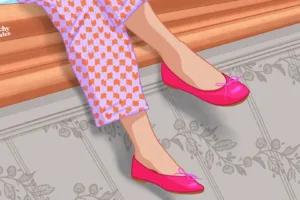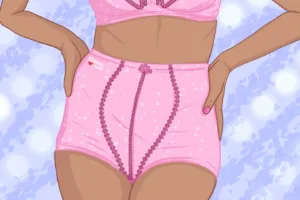Are You Wearing The Right Bra? Choosing The Good One In Your 50s
Breasts change a lot over a woman’s life. It’s a natural process: as we age, we lose collagen and elasticity in the skin, then fullness and shape. Also, many overlapping factors could contribute to a size increase, including changes in levels of hormones, a tendency to gain weight in all parts of the body, and water retention.
Midlife is probably the time in which finding the right bra becomes more challenging than usual: none of them seem to fit just right. A survey of 1,130 postmenopausal women, carried out by the International Health Foundation in the Netherlands, reported that 18.6% of the women had to buy a larger bra size and concluded that “the most important factor associated with such an increase in breast size after menopause was weight gain”. Maybe it’s time to reconsider that the usual ones you wear for your breasts may not have changed cup size, they simply may fill those cups differently.
Are you wearing the right bra?
The Breast Biomechanics Research Team at the University of Portsmouth in the UK found that wrong bra size could be damaging your breasts by allowing fragile ligaments to be irreparably stretched.
Many women have strong preferences for certain styles of bra and won’t buy anything else – Wendy Hedger, a researcher on the study, said-. They won’t even look at anything that doesn’t look like the sort of bra they are used to wearing. In sports bras, for example, many women won’t buy a bra that resembles their everyday bra and does up at the back. They think if it can’t be pulled over their heads like a crop top then it’s not a real sports bra. But this is not true and many sports bras do up at the back in the same way as a traditional bra and do a very good job of supporting women. And some women cause breast pain or discomfort by not buying the right sized bra. There’s a social stigma about certain sizes; many women don’t want to be seen as too small or too big and buy a bra that doesn’t fit well in order to be what they consider to be a normal size.
There is no such thing as a definitive bra size. Bra fit depends on style, shape, and fabric. A major reason why so many women wear the wrong bra size is that they never get professionally measured but instead base their choice of bra size on common assumptions of what a B-cup or an A-cup supposedly looks like. The AARP (the American largest nonprofit organization dedicated to empowering people in their 50s to choose how they live as they age), suggests taking note of your breasts’ shape, fullness, proportions, position, and spacing at home and then keeping those factors in mind while you shop. Your bra needs to be able to support you throughout the day: lift your arms above your head, checking that the bra stays in the same place. The main thing to remember is that if your bra or your breasts are sagging when you put your undergarments on, the band or the cups might be too big. A few signs you may not be wearing the right size include; cup spillage, slipping straps, underwire poking in the sides, or a bra that is riding up the back.
Figuring out your right band and cup size
The best thing you could do is getting a professional bra fitting at a boutique: you might be surprised what a bra expert will tell you. In general, if you go up in the band, you should go down in the cup and vice versa. Don’t forget most of the support comes from the band. Getting the band size right is crucial because it should offer 80% of a bra’s support, along with 10% from straps and 10% from the cups. Good bras are supposed to be designed to distribute the majority of the weight across your back (check out the Playtex Bra Fitting Guide). But to be able to do that, your bra needs to be tight enough so it can firmly hold onto your ribcage. If your band is just kind of floating on top of your skin, the entire weight of your breasts is hanging from your bra straps and put on your shoulders. And that would probably lead to neck, shoulder and back pain. Also, the back strap of the bra should not ride up but sit straight across your body and the straps should not be too tight or carry the full weight of your breasts. The underwire should curve snugly around the breasts but never dig in.
Now, look in the mirror: check that the back of the bra hugs the narrowest part of your back, and is sitting at the same level as the front. Make sure you can run your finger comfortably along the inside of the band, if not then the bra is too tight. Invest in comfort, good material quality, durability and, of course, price (value for money) and remember to replace bras every twelve months. In general, once it starts to loosen and slip, it’s time to get rid of any underwear that’s languishing at the back of a drawer.




